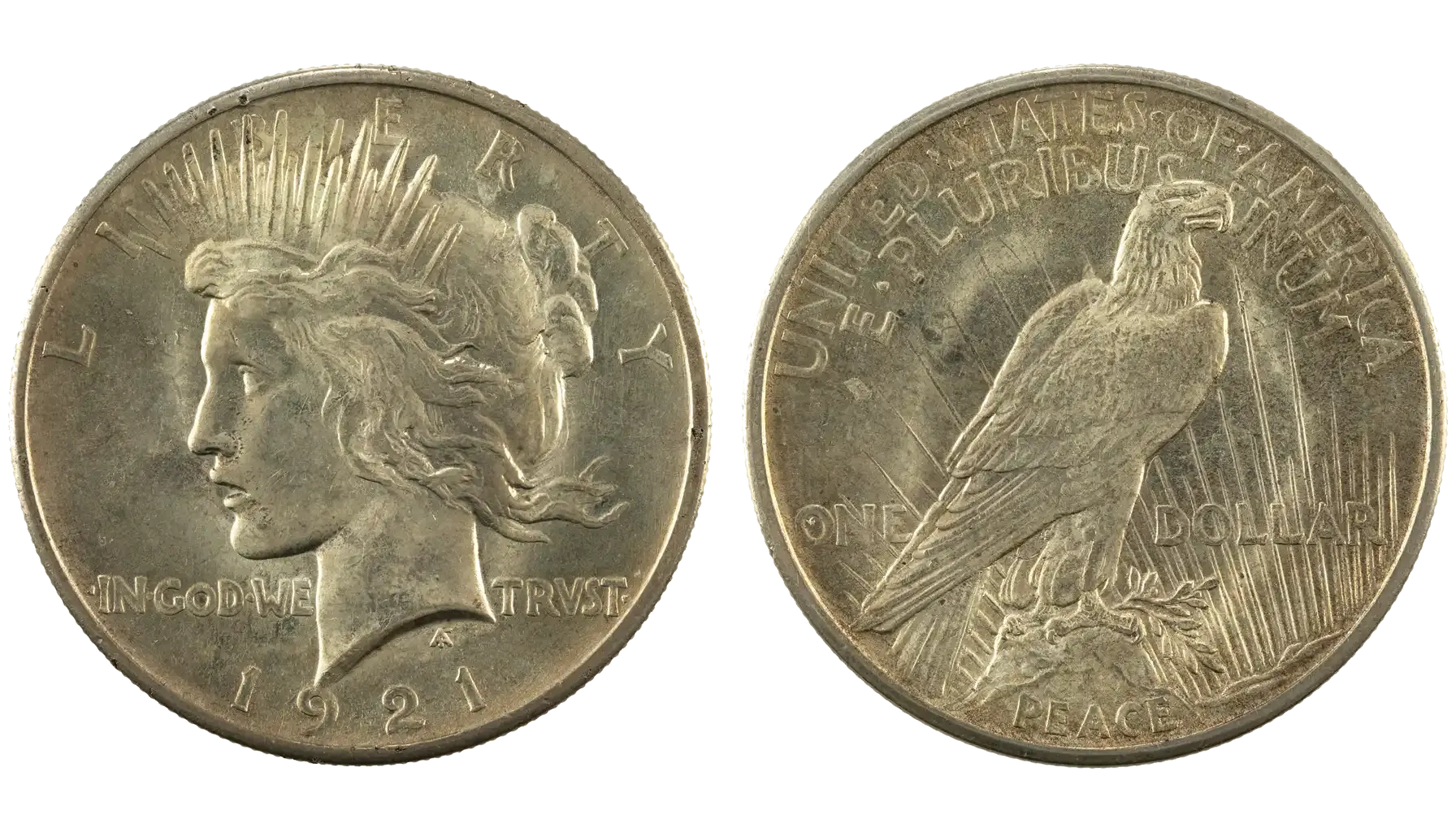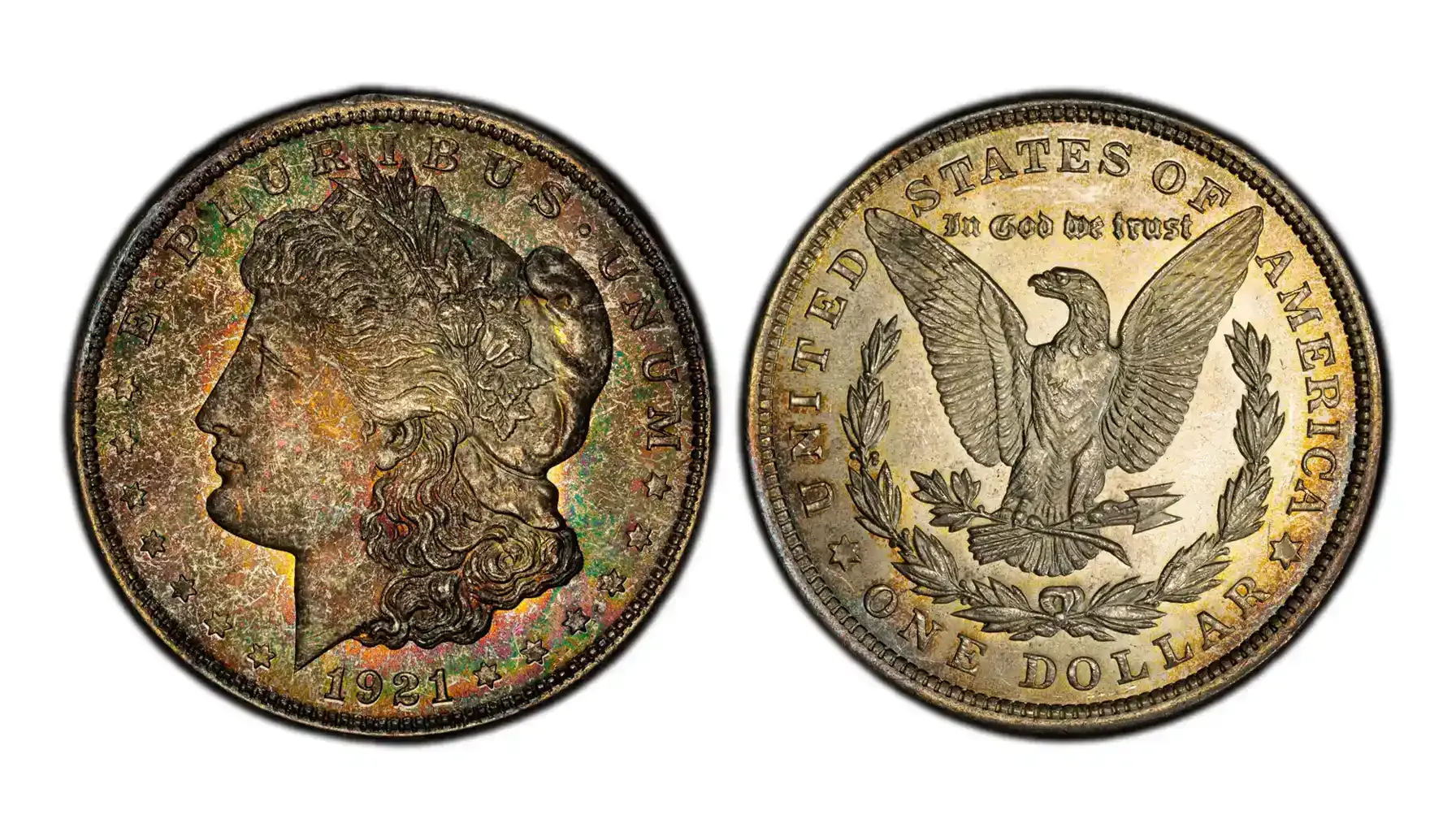Contents:
As is generally the case, mid-series issues are often overshadowed by their rarer or earlier counterparts. A regrettable outcome, indeed. However, the truth is that those units of currency struck in the middle of a series are usually devoid of minting problems (≠errors), biases, and instability in terms of collector perception. This is exactly what the 1939 Lincoln Wheat penny is about.
To collect relics of the past, one should learn more about their origins, explore the main features and characteristics, and check coin value well in advance. As a response to a rising interest in the numismatics of the 20th century, let us explore the peculiarities of the series and one particular 1939 issue, as well as why some 1939 wheat pennies have been sold for thousands at auctions with investment potential to grow.

Overview of the 1939 Penny
The 1939 Lincoln cent (or penny, if you like) is a relatively common issue released within the widely celebrated Wheat Cent series, which began with a historically significant yet controversial 1909 VDB coin and came to an end with a promising, hope-giving 1958 penny. Although this date might be overlooked by collectors, each coin may turn into a valuable asset, bringing wealth to its holder in an instant. But why?
The Historical Perspective
1939 was a pivotal year on the world stage.
Having barely recovered from the devastating World War I, nations all over the world were soon (in)directly involved* in another global conflict that would be considered one of the most disastrous in history. The United States, just like any other country, could not function as it used to anymore. In turn, as the US was still tackling the economic aftershocks of the Great Depression, there was only one direction not to get defeated – the focus on defense preparation and gradual economic recovery.
Nevertheless, the coinage programs launched by the United States Mint were not suspended. Instead, the monetary system was required to keep the financial sector solid and firm. For those who separate coins from the relevant historical events, the 1939 penny may be "one more instance released". However, for numismatic enthusiasts, these are relics that endured the crises and turned into profitable investment tools, which will grow in value even more.
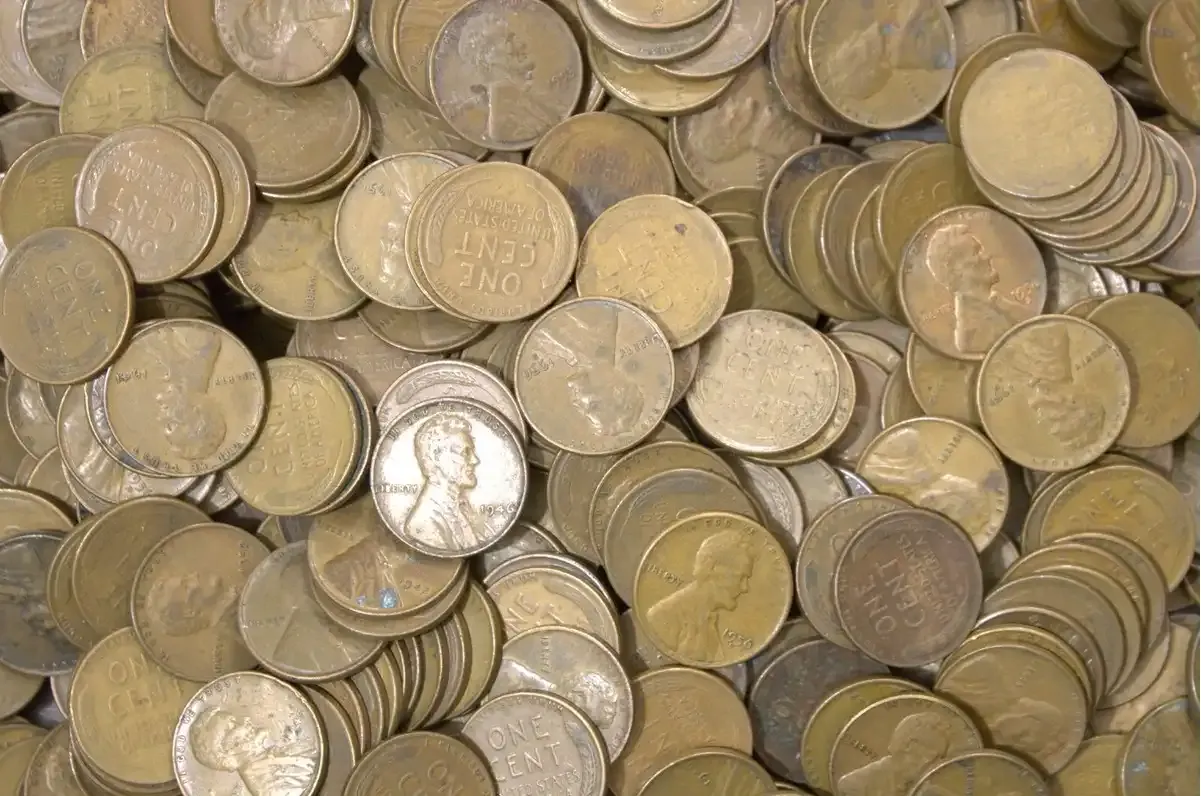
*In 1939, the US was not directly involved in World War II. The conflict had erupted in Europe, but America maintained a position of official neutrality with evident support for its allies through economic and material aid. This did not last long. After December 7, 1941, the attack on Pearl Harbor prompted the United States to formally enter the war.
Design Features and Physical Specifications
Obverse Design: The obverse features a right-facing portrait of Abraham Lincoln, designed by Victor David Brenner, with the inscriptions “IN GOD WE TRUST” above Lincoln’s head, the word "LIBERTY" to the left, the date "1939" to the right, and a small mint mark below the date.
Reverse Design: The reverse, also designed by Brenner, showcases two wheat stalks curving along the left and right rims, along with the national motto “E PLURIBUS UNUM” above and inscriptions “ONE CENT” and “UNITED STATES OF AMERICA” positioned in between.
The Main Features of the 1939 Penny | |
Composition | 95% copper, 5% tin and zinc |
Weight | 3.11 grams |
Diameter | 19.05 mm (0.75 inches) |
Thickness | 1.52 mm |
Edge | Plain |
Designer | Victor David Brenner |
Mint Marks | None for Philadelphia “D” for Denver “S” for San Francisco |
Penny Varieties by Mint
1939 1C (Regular Strike)
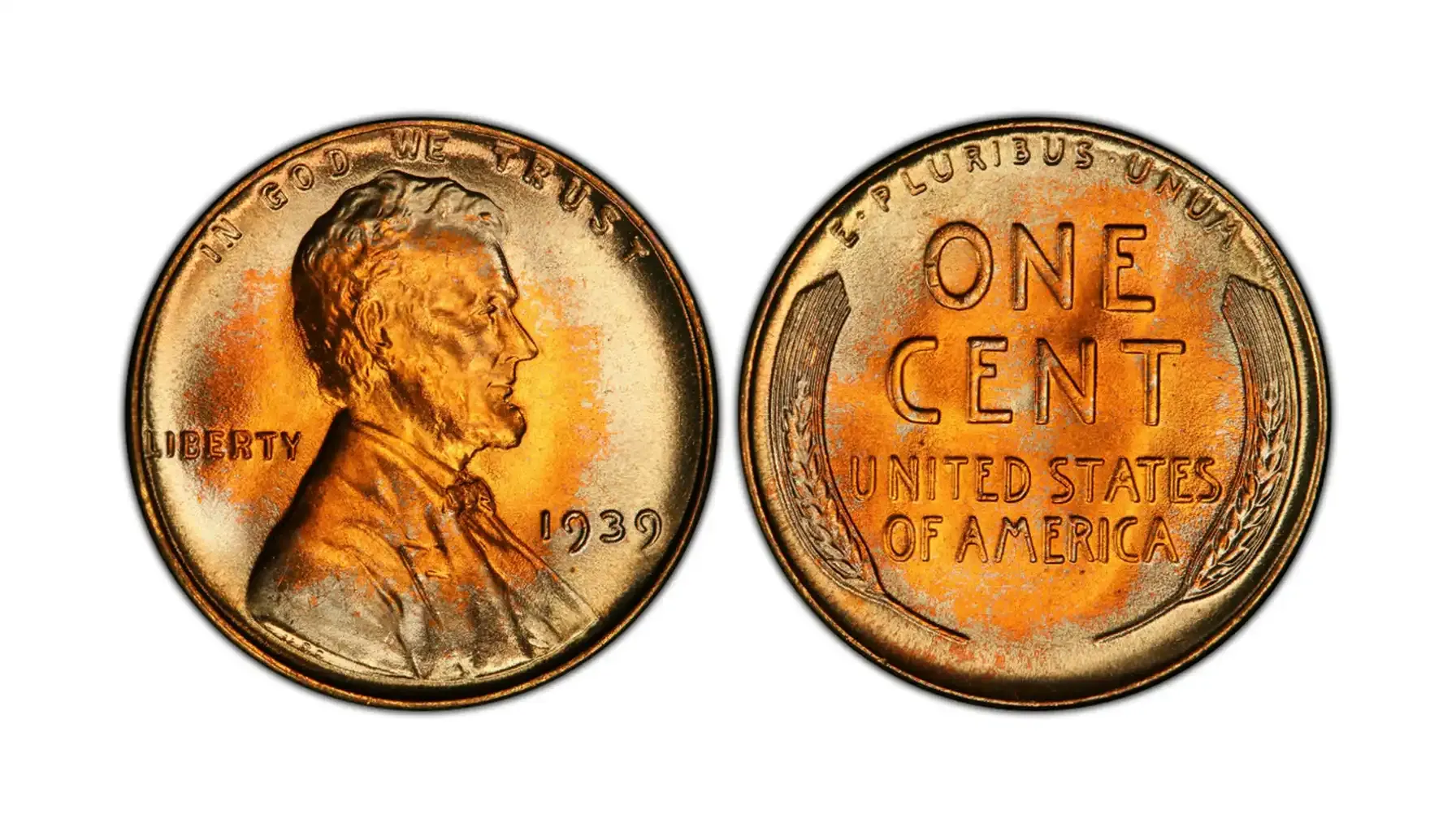
Produced by: Philadelphia Mint
Mintage: 316,466,000
Designations: BN, RB, RD
Auction Record: $36,000 for MS68+RD
In the usual manner, the 1939 wheat penny no mint mark produced by the Philadelphia Mint is the most common of the year’s issues. Obviously enough, it is available in all circulated grades, though higher mint-state examples (especially the ones with the RD, i.e., red designation) can be more valuable at times.
1939-D 1C (Regular Strike)
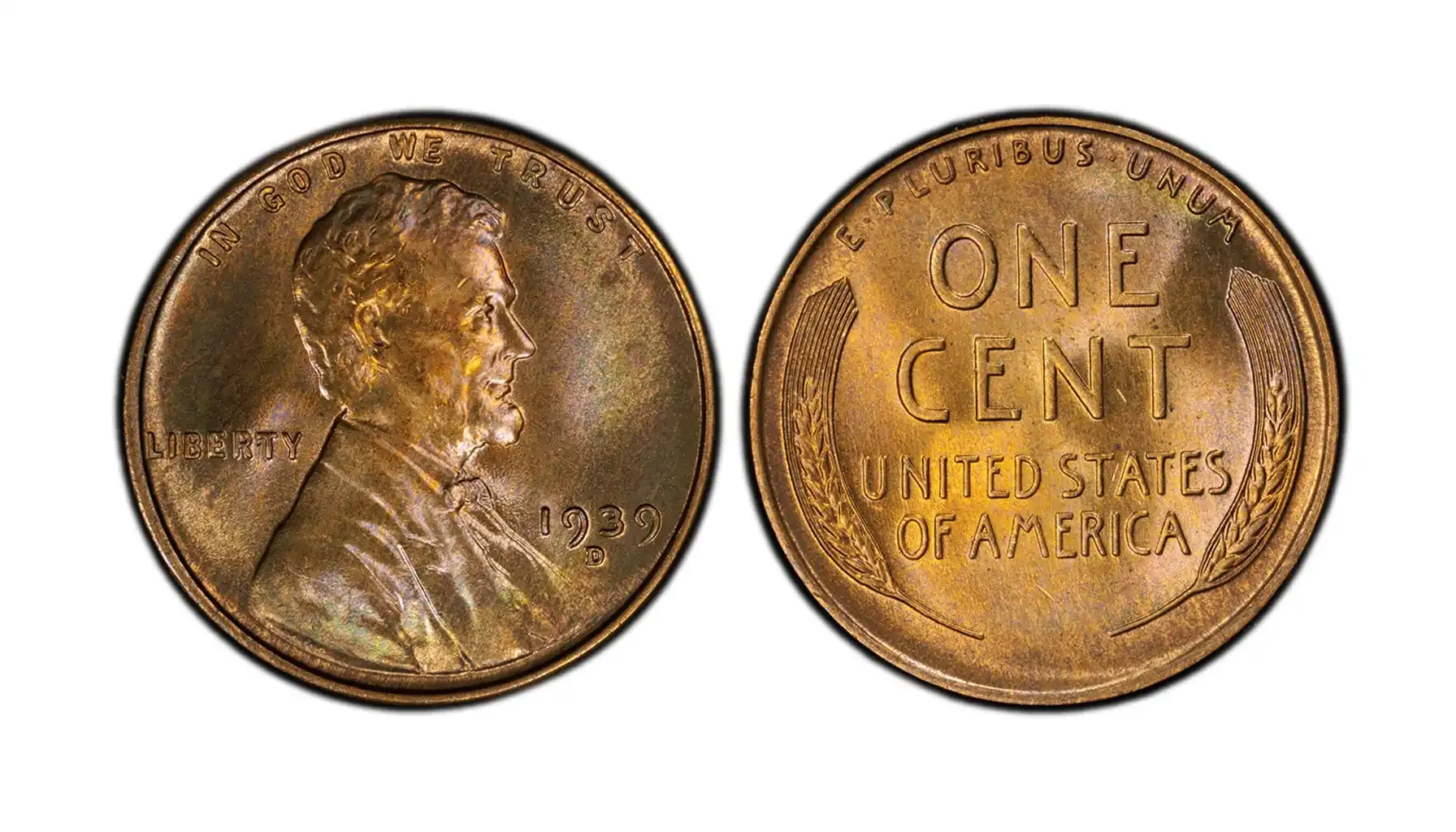
Produced by: Denver Mint
Mintage: 15,160,000
Designations: BN, RB, RD
Auction Record: $11,500 for MS68
Even though it is the lowest mintage of the three regular-issue 1939 cents, the 1939 D penny does not bring the highest prices. Why is it possible? This might happen because of the availability of well-preserved examples, for many coins were instantly brought into collections shortly after release. In high grades, however, red specimens are scarcer and increasingly sought after either way.
1939-S 1C (Regular Strike)

Produced by: San Francisco Mint
Mintage: 52,070,000
Designations: BN, RB, RD
Auction Record: $5,520 for MS68RD
As for the last regular issue, the San Francisco Mint produced the 1939 S wheat penny coins in moderate numbers, making it relatively common in circulated condition. Indeed, finding examples in superb uncirculated conditions with strong red coloration can be more challenging. These are appreciated for their rich toning and typically sharper strikes.
1939 1C (Proof)
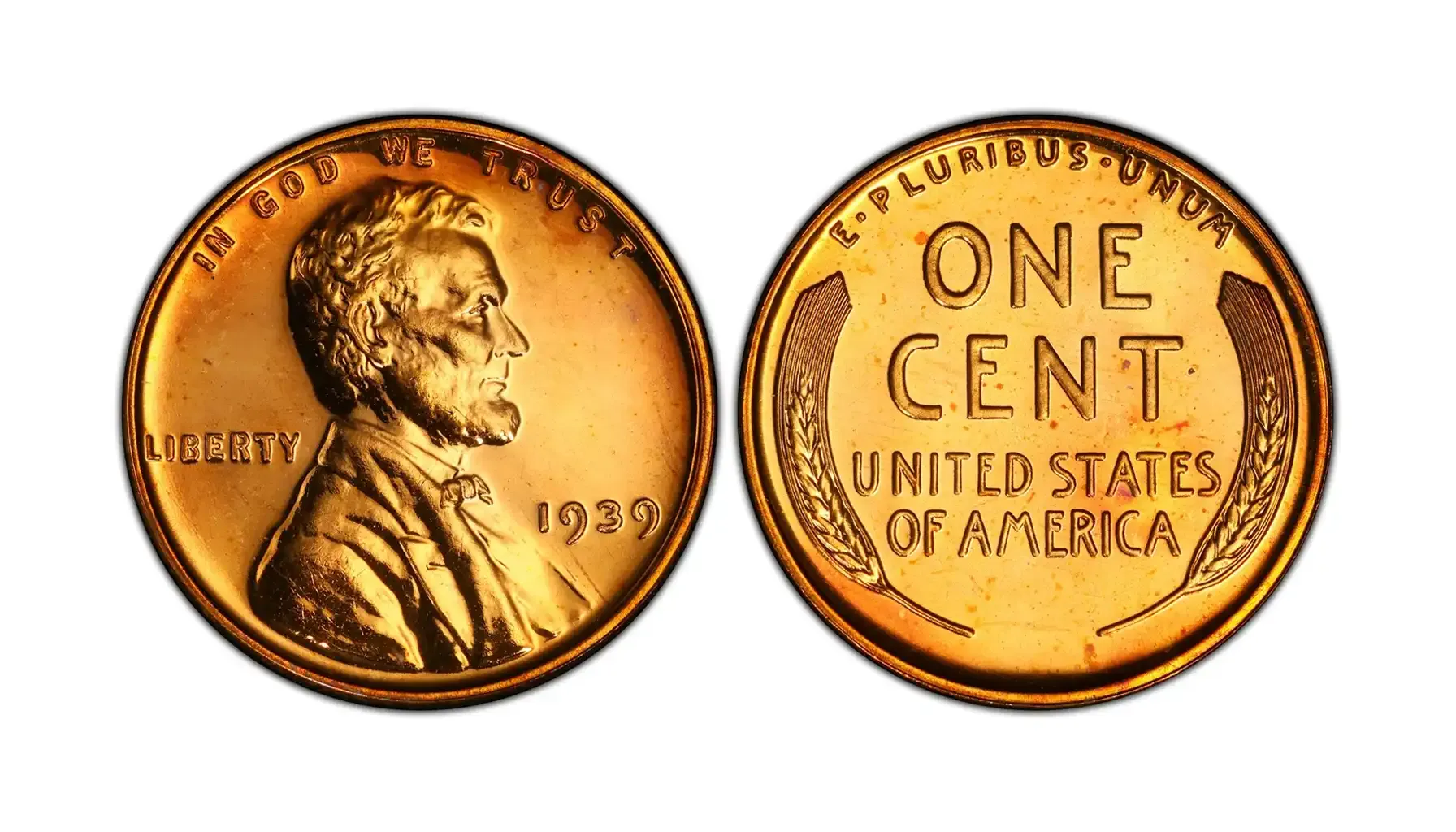
Produced by: Philadelphia Mint
Mintage: 13,520
Designations: BN, RB, RD, Cameo
Auction Record: $6,900 for PR67
The proof version of the 1939 Lincoln cent was struck in Philadelphia for collectors with a total mintage of just 13,520 pieces, which is rare. The appearance of such instances, as is customary, boasts mirror-like fields and frosted devices, particularly in Cameo designations, which are rare and may be worth thousands.
A Quick Note
BN, RB, and RD designations refer to the color classifications used by coin grading services to describe the surface color and luster of copper coins.
BN (Brown) means that most of the original red color has faded due to oxidation.
RB (Red-Brown), on its part, presupposes that the coin retains only 15% to 85% of red toning.
RD (Red) is reserved for coins that display at least 85% of their original red luster.
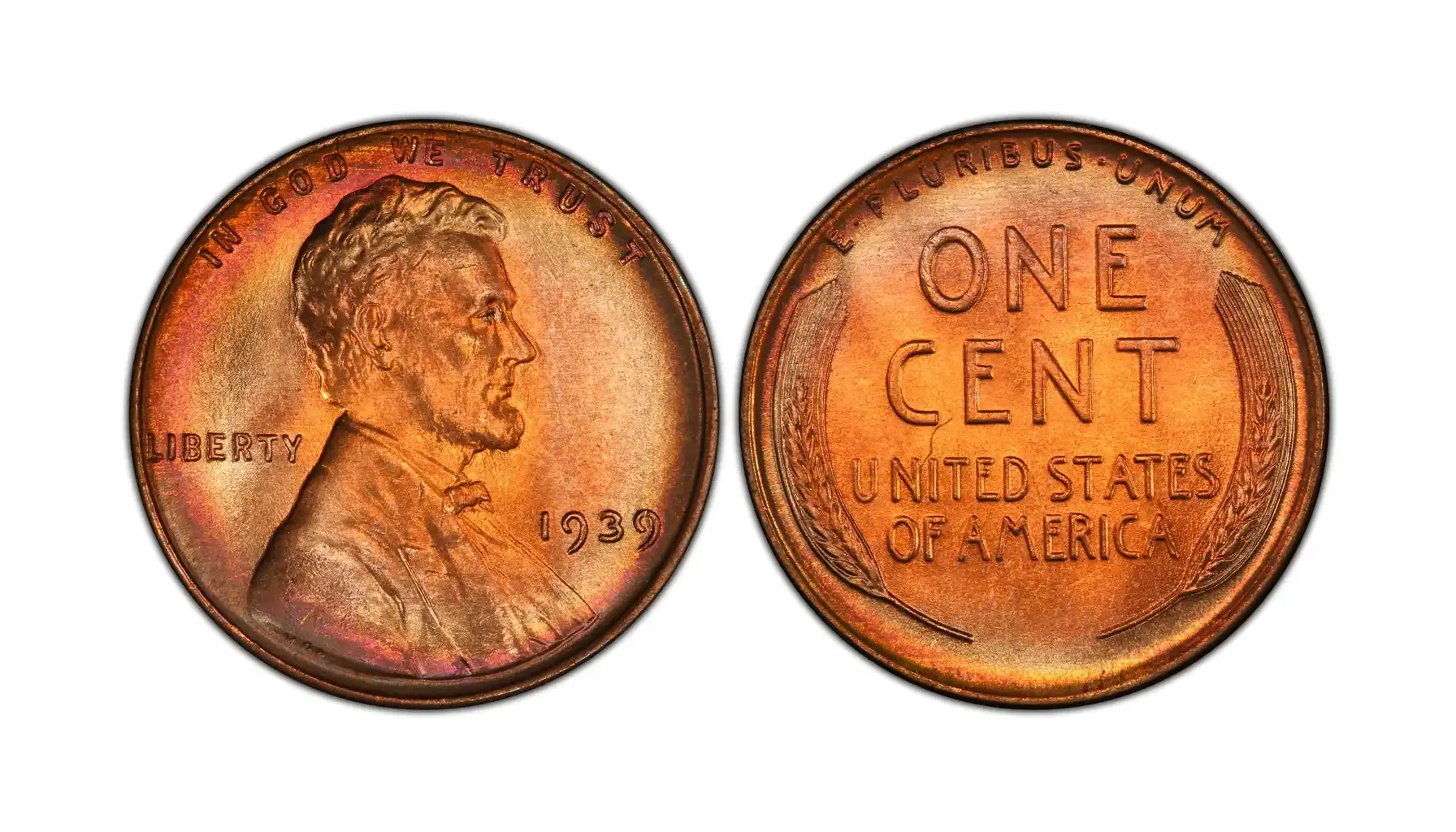
Should you wish to delve deeper into minting specifics, please refer to Coin ID Scanner, i.e., a universal numismatic app to identify, evaluate, and analyze coins with the use of an inbuilt camera only. The app also provides instant access to coin values, auction insights, and historical data – everything you might need for confident, worry-free collecting.
The 1939 Penny Value by Mint Mark and Condition
How much is a 1939 penny worth? The 1939 wheat penny value is a complex variable that may vary. However, there is one factor that keeps pricing fluctuations more or less stable, and it is definitely about condition. Millions of coins were distributed, but only a small part of this quantity has managed to survive in high grades with original color.
Grading services like NGC rely on the Sheldon Scale to document the condition and, hence, determine the grade (from Poor P1 to Mint State MS70). The better the condition, the higher the grade. So, what is a 1939 wheat penny worth?
Grade | 1939 | 1939-D | 1939-S | 1939 (Proof) |
Good (G-4) | $0.10 | $0.20 | $0.15 | – |
Fine (F-12) | $0.20 | $0.30 | $0.25 | – |
XF (XF-40) | $0.40 | $0.75 | $0.60 | – |
AU (AU-50) | $0.75 – $1.25 | $1.50 – $2.50 | $1.00 – $2.00 | – |
MS-60 | $3 – $24 | $7 – $26 | $4 – $20 | $40 – $150 |
MS-65 / PR-65 | $28 – $165 | $34 – $150 | $24 – $150 | $215 – $1,650 |
MS-67 / PR-67 | up to $14,000 | up to $10,500 | $11,500 | up to $6,900 |
*Note: The value ranges listed are based on average market estimates provided by PCGS as of May 2025. These figures mainly reflect coins with the RD designation, yet coins with BN or RB may be valued slightly lower (yet not significantly).
Key 1939 Wheat Penny Errors and Varieties
“L” in Liberty on Rim
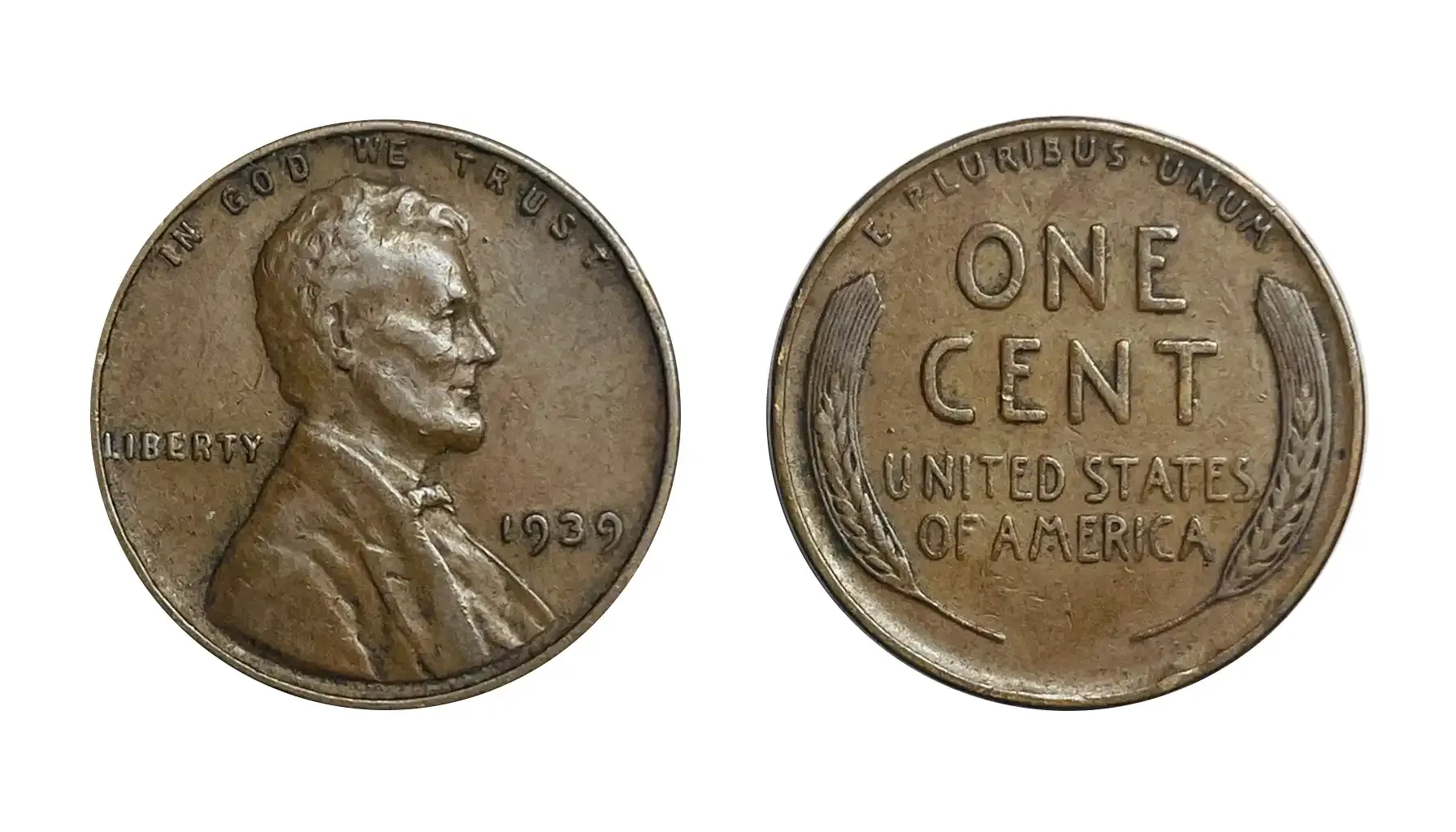
Estimated Value: $1,995
The error with the highest penny 1939 value in the list is the flaw where the letter “L” from the word "LIBERTY" is partially or entirely put on the rim. This might have come from a severe die misplacement or off-center strike, which forced a letter to be taken away.
Strike Thru Error
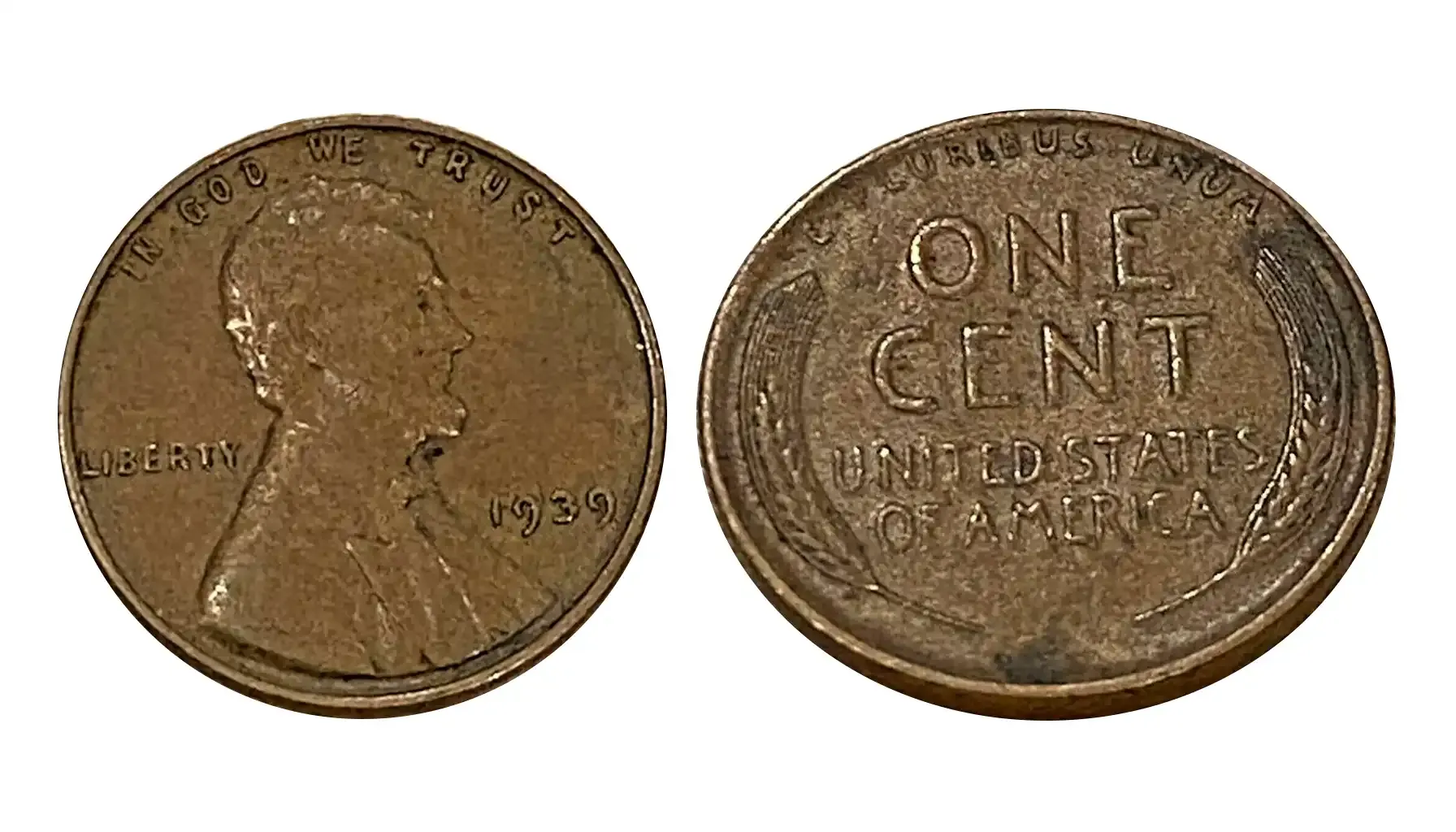
Estimated Value: $900
A strike-through usually occurs when a foreign object, e.g., grease, wire, etc., is caught between the die and planchet during striking. This results in a distorted or missing design element, with clearly visible distortions boosting the value to new heights.
Doubled Die Obverse (DDO)
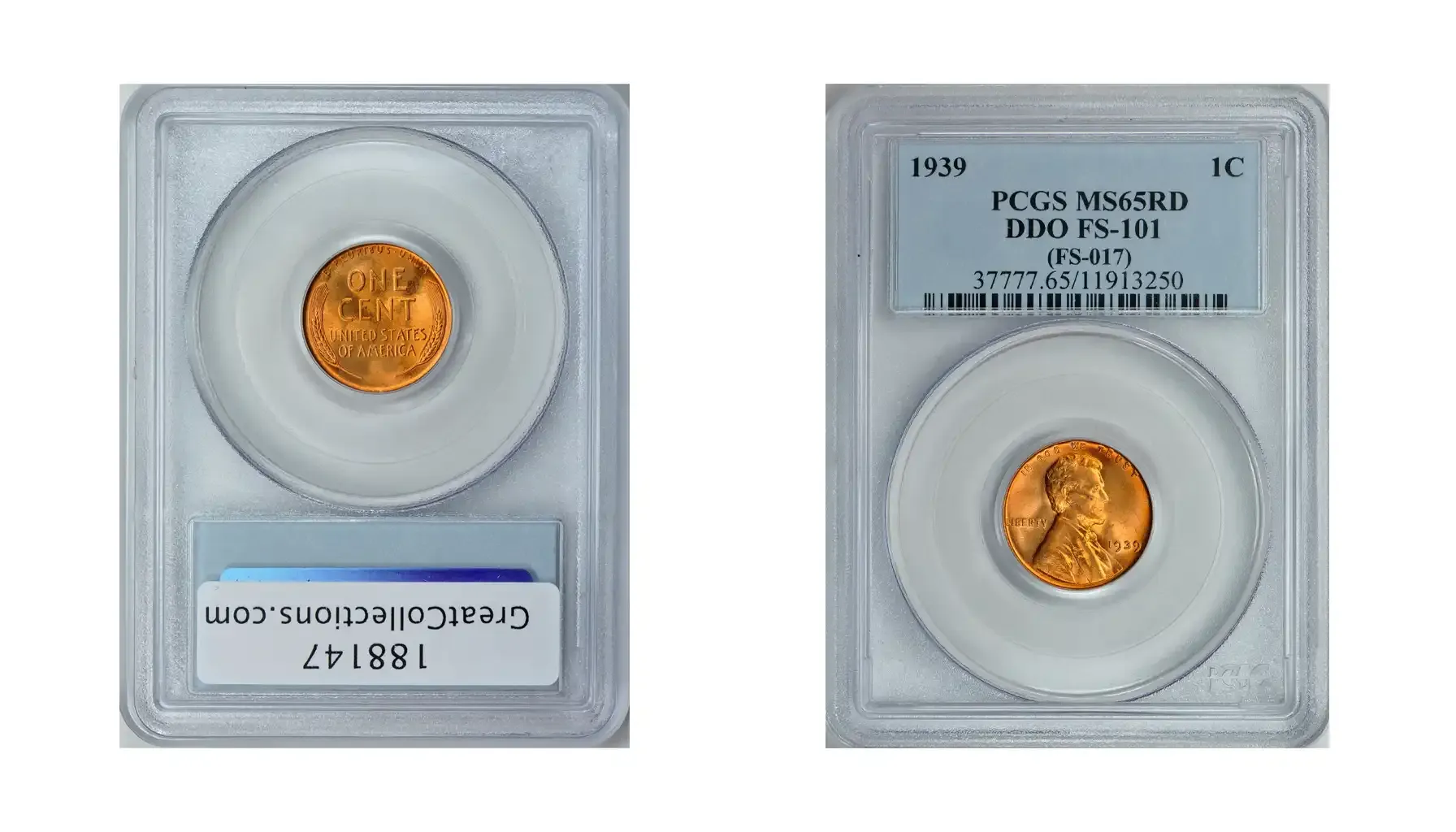
Estimated Value: $650
In this error (i.e., one of the most popular errors in fact), the coin’s obverse features noticeable doubling on inscriptions like “IN GOD WE TRUST” or “LIBERTY”.True doubled dies are distinct from common mechanical doubling, for they are caused by a misalignment during die creation and nothing else.
Broadstruck Error
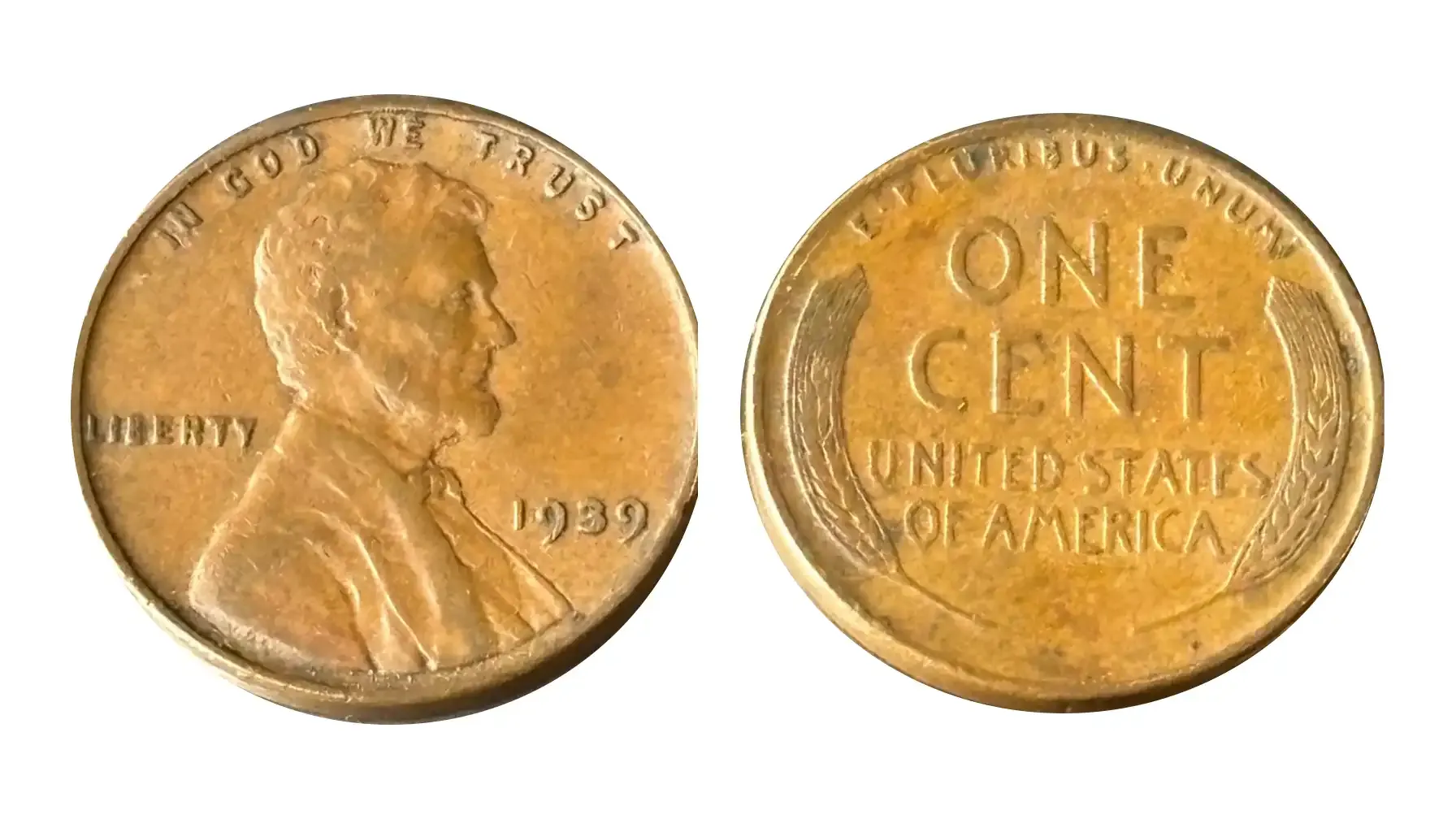
Estimated Value: $400
Here is another deviation that emerges when a coin is struck outside the retaining collar, causing it to expand beyond its normal diameter with spread-out edges. Indeed, it is not as popular as the above-mentioned instances, yet the value of a 1939 wheat penny with a broadstruck error might grow over time, too.
Related article: US Penny Errors: Small Mistakes, Big Collectibles
The 1939 Wheat Penny, though often blocked out by its more famous counterparts, holds remarkable potential for collectors who appreciate the quiet symbols of the loudest times.


